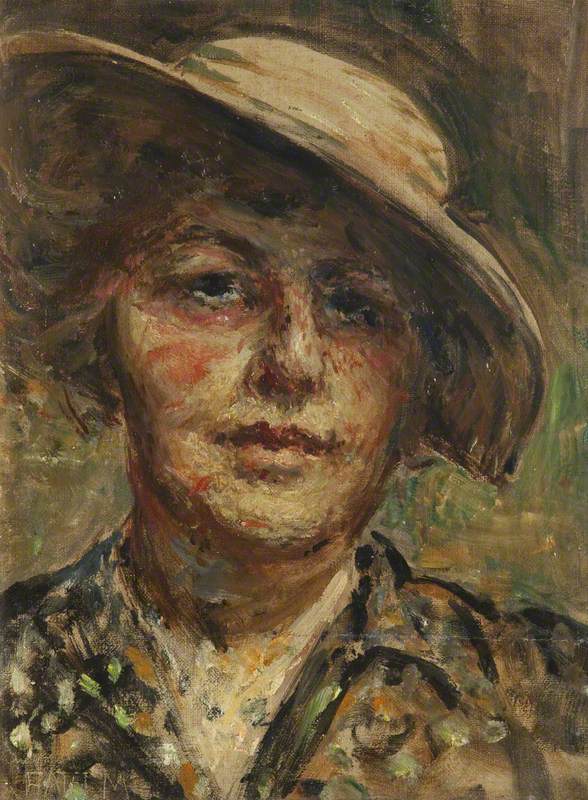|
PATTI
MAYOR 150
Gallery Oldham 10th September, 2022 to 28th
February, 2023
Reviewed by Jim Burns
Patti Mayor was born in Preston in 1872. Little seems to be known
about her early life. She studied at the Slade in London, and is
said to have spent some time in Paris. She returned to Preston where
she lived with her sister, Amy Mayor, a concert pianist, and
supported herself with her art works, teaching, and commissions for
portraits. Most of her output appears to have been portraits, though
there is evidence of some still life paintings and landscapes. It’s
said that the two sisters had “a local artistic salon imbued with
liberal Victorian values”.
Mayor was a keen Christian Scientist, and also active with the
Women’s Social and Political Union, which represented the
more-militant members of the suffrage movement. She took part in the
1908 Women’s Sunday March in London where she held up her painting
“The Half-Timer” to demonstrate how young girls were inducted into
the work-force in the mills at an early age. A “half-timer” was
someone who spent half a day at school and half a day at work.
Mayor never married and had no children. She does appear to have had
what is referred to as a “close relationship” with Joseph Garstang,
a local socialist, campaigner against conscription, and
conscientious objector during the First World War. He was imprisoned
and his health broken by the years he spent locked up. Patti Mayor
died in Preston in 1962.
The painting, “The Half-Timer” is in the modest but interesting
exhibition at Gallery Oldham, and points both to Mayer’s skills as
an artist and her determination to give the work an appearance of
reality. The girl is young and fresh-faced, clad in the shawl that
typified mill-workers of the time, but there is a suggestion that
she will soon begin to take on the tired appearance that came from
long working hours in poor conditions. This can be seen in the
features of the older woman portrayed in “Mill Girl with a Shawl”,
also in the exhibition. I had seen this painting before and it is,
to my mind, a powerful piece. I grew up in Preston, my mother and
one of my sisters worked in the mills, and I went to work in one
myself when I was sixteen in 1952.
Conditions in the 1950s were obviously better than they had
been fifty years before, and the women no longer wore shawls on
their way to work, but life in the spinning and weaving sheds could
still be unhealthy and sometimes dangerous.
Not all of Mayor’s canvases were of women in working-class clothes.
One painting, “Portrait of a Girl in a Cap”, shows an attractive
young woman smartly turned out, and others are conventional in terms
of perhaps having been commissioned or more likely portraying
friends and associates of the artist. Mayor also produced quite a
few self-portraits in which she looks composed and confident. There
is no doubt that she was a skilled artist, and one can’t help
wondering if her decision to spend her life in Preston didn’t hinder
a wider appreciation of her talents?
The gallery has boosted the number of items on display by including
works by other artists which have some social significance. Joseph
Southall’s “The Food Queue” is deftly done and of its time. And
there are a couple of paintings by James Fitton, an artist who was
active with the left-wing Artists’ International Association. He was
born in Oldham, moved to London, and established a reputation as a
commercial artist, but was politically committed and contributed to
Left Review. One of his
paintings in the Oldham exhibition is called “May Day” and is of a
communist demonstration.
It’s good to see the Patti Mayor paintings on display. There are
works by her in the Liverpool Walker, the Blackpool Grundy, and the
Preston Harris galleries, and on-line. She ought to be better-known.
|
